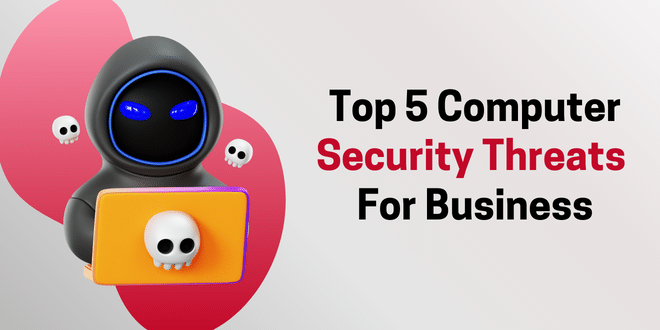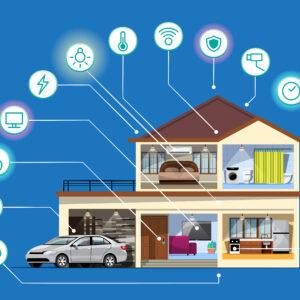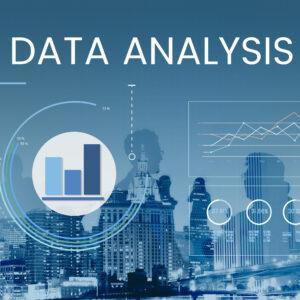Whether you love technology or hate it or fall in between, there’s one thing you cannot deny, and that is how much it’s taking over our lives. The digital world has grown in leaps and bounds and continues to grow as more and more people opt to work from home, and companies start to conduct their business online.
But, as the number of digital activity increases, so does the amount of cybercrime. This leads to new improvements and advancements in computer security, along with its varying threats.
In the past couple of years, we’ve witnessed large-scale companies all over the world falling victim to cybercriminals, ranging from unauthorized access to a financial account, full on data breaches, identity theft, and much more. Literally, every one and every kind of business is potentially at risk, whether it be a big corporation or a small online store.
One thing we can say for sure is that cybercriminals are becoming more creative by the hour, adopting new methods and strategies, but the unfortunate side of this is that a lot of companies out there, aren’t really putting up much, in terms of a fight to protect themselves.
The protection of your organization or online business is your sole responsibility. And this is where articles like this come into the equation, as it will provide you with at least a baseline of information that you can further expand on to help secure your online virtual properties.
Following are the top 5 computer security Threats for Business
A] Cloud Jacking
Cloud Jacking is a method used by cybercriminals that entails the infiltration of cloud computers by a third party. Once one of these hackers can gain access to your cloud system, they will likely try to reconfigure the cloud setup to obtain sensitive information, and eavesdrop on company and employee communications. Information obtained from that, can then be used to expand their control over the entire cloud network.
Cybercriminals, once they’ve successfully gained unauthorised access to the network system, will oftentimes used the opportunity to create different kinds of phishing scams. This may entail uploading fake instructions, memos or other forms of data to the company cloud. With the information coming directly through the network, employees will think it is legitimate and thus, will download it and follow the instructions laid out in it.
The end result can be anything from workers inadvertently giving hackers more access to the company’s systems, to giving out sensitive company data or even moving large amounts of company funds to the hacker’s accounts.
B] Ransomware
Ransomware is one of several forms of malware that results in a hacker gaining access to and holding the data of its victim for ransom. The computer hacker may threaten to corrupt, block access to or publicly publish the data unless a ransom is paid out.
The vast majority of ransomware attacks occur through phishing emails that oftentimes will contain malicious files or links to websites that leads to the victim downloading a malicious file. The system then gets infected by this malware, which will then seek out files to encrypt, which in turn prevents the end user from accessing their own files.
Drive-by downloading is another method in which ransomware is spread, which will usually occur when an end user visits a website that has been infected with malware. That malware is then copied to the users system without their knowledge.
C] Viruses and Worms
Worms and viruses are malicious programs that are able to spread and propagate on networks and computer systems. Both are designed to exploit vulnerabilities which allows the hacker to steal confidential data from a system.
Viruses and worms are also capable of installing backdoor viruses onto a system, which the hacker can then use to access the system illegally. With access such hackers may look to corrupt and inflect even more significant damage on a company’s network of systems.
Worms are capable of eating up a considerable amount of network bandwidth and computer memory, which could result in systems, servers and network systems crashing. Worms are capable of functioning independently, allow them to spread between different systems, however, when it comes to a virus, a host system is required to carry out a specific action before the virus can activate.
D] Broken Access Control
With any website, it’s very important the webmaster knows who has access to which portions of the website.
Broken access control, isn’t something you should confuse with broken access, of which have their similarities but are not the same.
As an example, if you were to give a contractor administrative rights to your website. Did you remember to relinquish those rights right after they logged off from your website? What about you’re other services, like email or your various Google accounts?
The more access points that exist to gain access to your system or network, the more vulnerable, it essentially is. Hackers now have more ways they can use to exploit your system, gain access to it, modify sensitive information, all of which could be done without your knowledge.
On the flip side, employees that have too much access could end up breaking something, whether intentionally or not. For this reason, it’s very important you know who has access to what.
E] Spyware
Spyware is another form of malware that is designed to gather information about a user and their device. This information is then sent to the hacker without the user’s knowledge. A spyware will usually source sensitive data, which is then shared with data collection firms, advertisers and even cyber criminals, who will usually use that data to make money.
This information may also be used to either sell or steal user data such as credit card numbers, bank account details, login data, and internet usage information. Which can also be used to commit identity spoofing or identity fraud.
Spyware as a malware type can oftentimes be quite difficult to identify, and is more than capable of causing harm to your device or network. It is also capable of leaving a network system more vulnerable to a data breach, affecting various network systems while slowing down overall performance and inhibiting user access and activity.
Conclusion
This security threat can be prevented with right action and right precaution. If your system has been hacked or it has face virus or malware issue then do consult with professional cyber security consultant and computer expert which can guide to secure your network and valuable data from being misuse.











